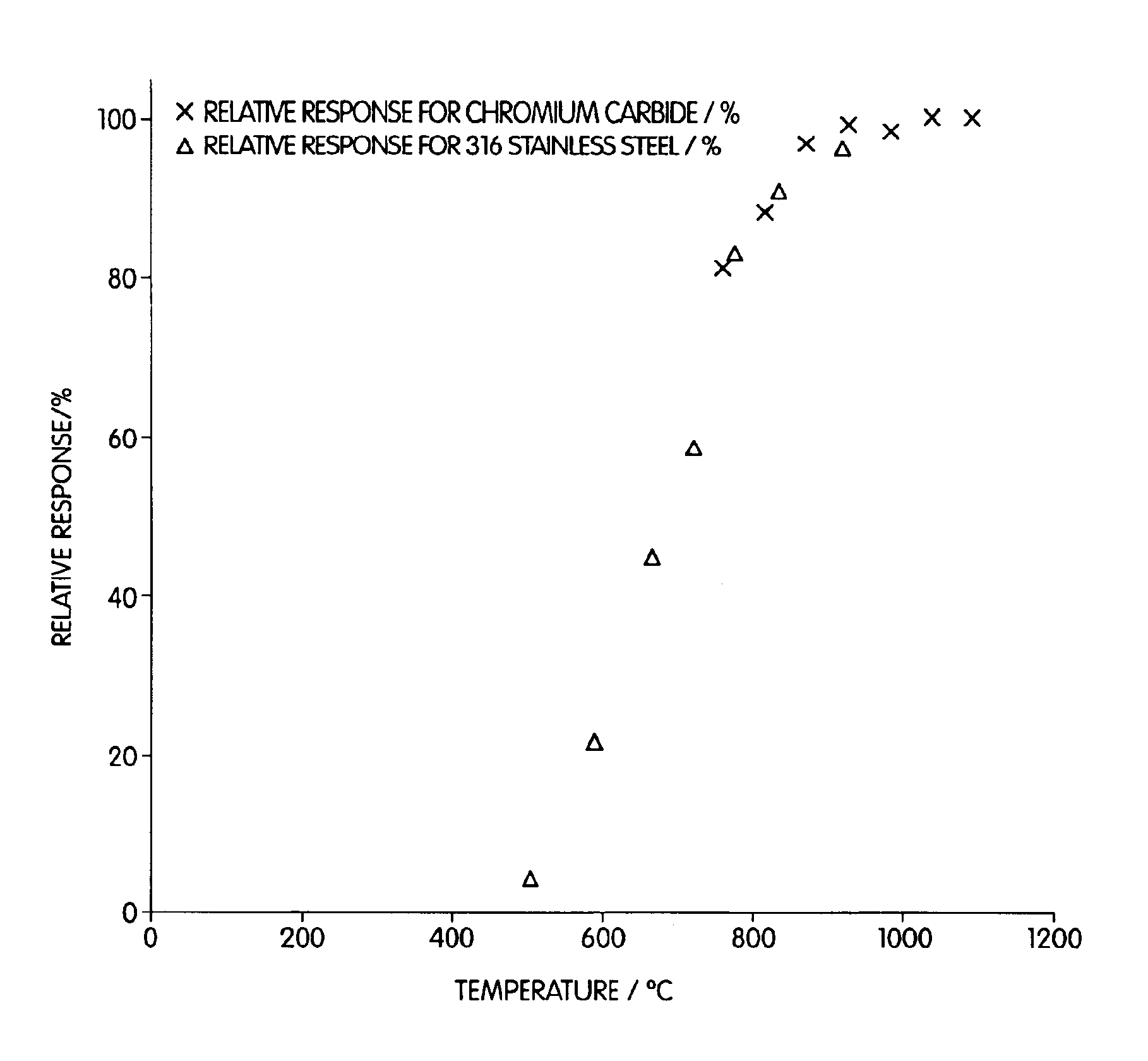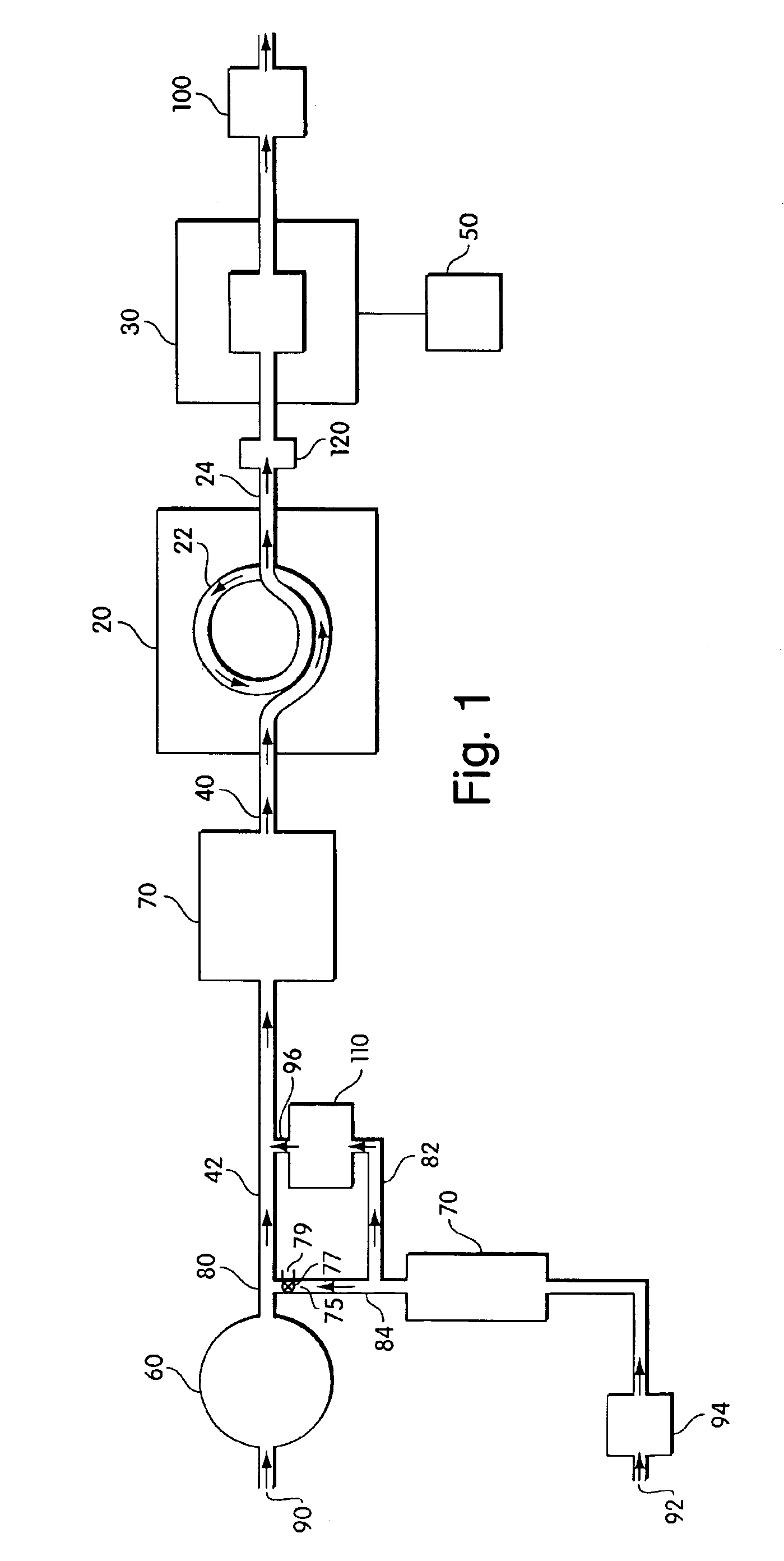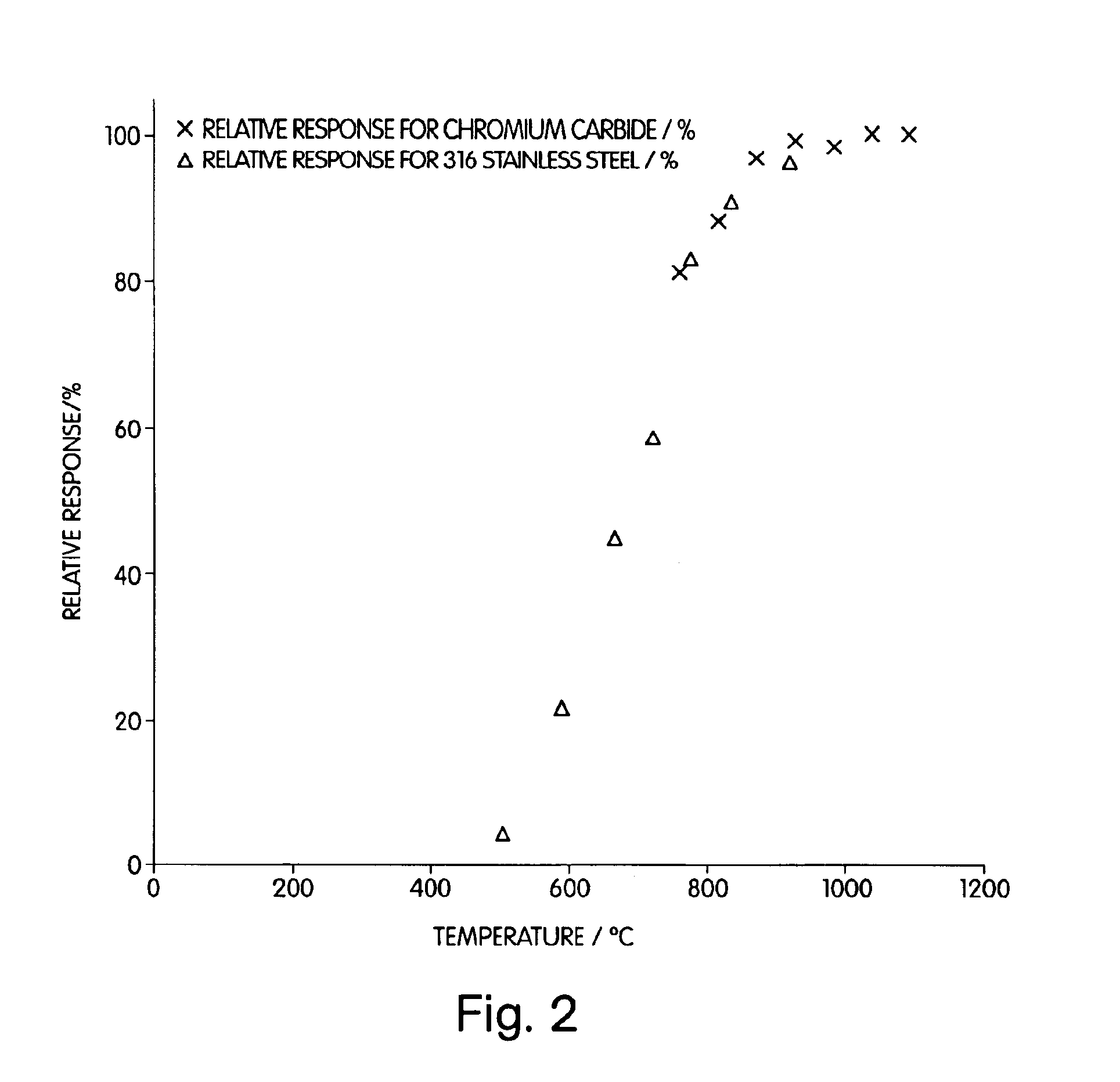Method and apparatus for measurement of sulfate
- Summary
- Abstract
- Description
- Claims
- Application Information
AI Technical Summary
Benefits of technology
Problems solved by technology
Method used
Image
Examples
working examples
Example 1
In one set of experiments, a system such as that shown in FIG. 1 was constructed. The sulfate converter had a surface of 316 stainless steel and was a resistance heated-tube converter (Model 350, Thermo Environmental Instruments, Franklin, Mass.) that is commercially available for NOx or ammonia analysis. The converter was modified by removing all extraneous valving and was connected via ¼ inch OD copper tubing to one end of an aerosol generator. The other end of the converter was connected via ¼ inch OD PTFE tubing to a trace level pulse fluorescence sulfur dioxide detector, the 43C-TLS™ detector available from Thermo Environmental Instruments, Franklin, Mass. A 5 μm pore size, 47 mm diameter, PTFE filter was placed in line between the converter and the detector to trap any particles that might damage the detector.
Ammonium sulfate particles were generated by bubbling dry, clean air through a 0.67 mM ammonium sulfate solution. Approximately 10 ppb V (corresponding to 40 μg / ...
example 2
A similar system to that used in Example 1 was used for another set of experiments. The converter that was used was a quartz tube furnace (Thermo Environmental Instruments, Inc., Franklin, Mass.) rather than the stainless steel tubing as was used in Example 1. To aid in determining whether or not a component in the stainless steel was responsible for the conversion of sulfate to sulfur dioxide, the furnace was operated both empty and filled with quartz wool. Ammonium sulfate particles (aerosol) were generated by bubbling dry, clean air through a 0.67 mM ammonium sulfate solution. Approximated 10 ppb V (corresponding to 40 μg / m3) of ammonium sulfate aerosol was generated and the amount was verified by sampling (in parallel to the test method) on a 47 mm diameter, 2 μm pore size, PTFE filter in a PTFE filter pack. Exposed filters were then analyzed by ion chromatography to determine time averaged particle generation rate.
The temperature of the furnace was maintained at 1100° C. Otherw...
example 3
In another experiment, the same furnace as that used in Example 2 was operated after placing a piece of 316 stainless steel (SS) tubing in the quartz furnace. The sample did not necessarily pass through the SS tubing, but did pass over it. Various temperatures (760-1093° C.) were employed over a range of, and at temperatures of 900° C. and greater, a conversion efficiency of about 100% was realized. 316 stainless steel contains, iron, chromium (16 to 18%), nickel (11 to 14%), molybdenum (2 to 3%), manganese (2%), silicon (0.75%), carbon (<0.08%), phosphorous (<0.04%), and sulfur (<0.03%). Thus, these results coupled with those of Example 2 illustrate that these elements, or compounds containing these elements, can cause the reduction of sulfate to sulfur dioxide at elevated temperatures.
PUM
 Login to View More
Login to View More Abstract
Description
Claims
Application Information
 Login to View More
Login to View More - R&D
- Intellectual Property
- Life Sciences
- Materials
- Tech Scout
- Unparalleled Data Quality
- Higher Quality Content
- 60% Fewer Hallucinations
Browse by: Latest US Patents, China's latest patents, Technical Efficacy Thesaurus, Application Domain, Technology Topic, Popular Technical Reports.
© 2025 PatSnap. All rights reserved.Legal|Privacy policy|Modern Slavery Act Transparency Statement|Sitemap|About US| Contact US: help@patsnap.com



